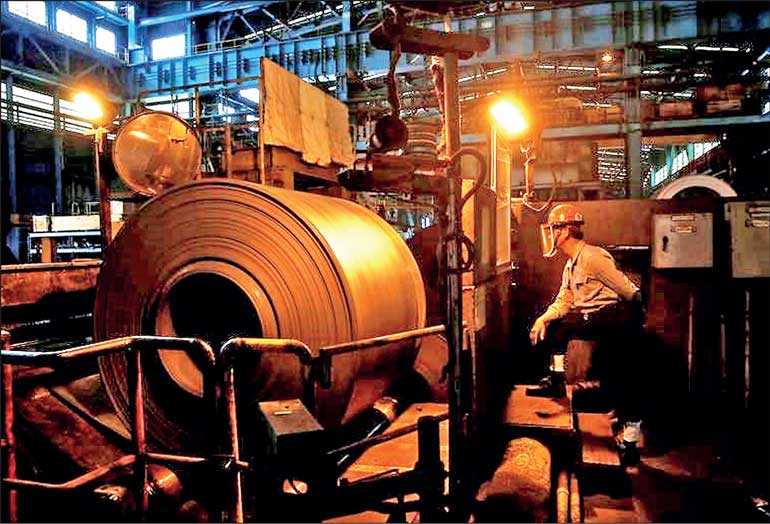Wednesday Nov 19, 2025
Wednesday Nov 19, 2025
Friday, 3 May 2019 00:00 - - {{hitsCtrl.values.hits}}

LONDON/HONG KONG (Reuters): Global factory activity recovered a little last month but still appeared to be in the doldrums as demand remained weak and trade protectionism concerns prominent, while stimulus measures had yet to fully kick in.
In the euro zone, business survey data yesterday pointed to a third straight month of contraction and while manufacturing is still growing in the US, it missed expectations by a wide margin on Wednesday. The picture was similarly gloomy across much of Asia.
That left the outlook for central banks predominantly skewed towards either easing – or at least not tightening – policy. Malaysia and New Zealand are prime candidates for potential rate cuts, and monetary authorities in Australia are facing growing calls to do likewise.
The Bank of England, meeting yesterday, is almost certain to remain on hold but keep its options open for later in the year, in what will be its first policy decision since the postponement until 31 October of Britain’s scheduled departure from the EU.
As the euro zone’s economic prospects have dimmed – in part due to a lack of clarity over Brexit – expectations for interest rate hikes from the European Central Bank have been pushed further into next year.
The Federal Reserve held interest rates steady overnight, saying it saw no strong case for either hiking or cutting, disappointing US stock markets.
“We see the May meeting as more evidence that this pause has legs. We continue to expect the Fed to leave rates unchanged through this year and next,” BNP Paribas economists told clients.
A resolution in the trade dispute between Washington and Beijing would go a long way towards improving the mood.
While there is still great uncertainty, US Treasury Secretary Steven Mnuchin said the two countries completed productive talks on Wednesday and were nearing a deal that would roll back a portion of the $ 250 billion in US tariffs on Chinese goods.
Beijing in March announced additional tax cuts and infrastructure spending this year worth hundreds of billions of dollars, while bank lending in the first quarter hit a record 5.81 trillion yuan ($ 863 billion).
The People’s Bank of China has also been cutting banks’ reserve requirements and keeping short-term money market rates low.
Floundering factories
Purchasing Managers’ Indexes (PMI) showed manufacturing activity shrank again in the euro zone, and that the boost to British factories from record rates of pre-Brexit stockpiling slowed in April.
Uncertainty over the terms of Britain’s EU departure, long scheduled for 29 March, had previously prompted factories to load up on parts and materials at the fastest rate in the 27-year history of the PMI surveys.
The same factor affected the rest of Europe. Activity in the continent’s manufacturing powerhouse Germany shrank for a fourth month running and in Italy it contracted for a seventh month. It accelerated in Spain but only stabilised in France.
In China, both official and private factory surveys suggested an unexpected loss of momentum last month, though overall activity still expanded, albeit at a more subdued rate.
While many analysts agree the worst may be over for the world’s second-largest economy, the disappointing readings – which followed surprisingly upbeat March data – suggested it is still struggling for traction.
April’s downbeat reading, coupled with a soft outlook for trade, have raised questions over how much more stimulus is needed to generate sustainable growth in China without risking a sharper jump in debt.
“These uncertainties make us strongly believe that the Chinese Government will continue its fiscal stimulus... and will provide enough credit to smaller private firms to keep them running and stabilise the job market,” said ING Greater China economist Iris Pang.
As China has generated nearly a third of global growth in recent years, financial markets have been counting on another strong, credit-fuelled bounce.
“We’re starting to see a bottoming-out of the slowdown,” said ANZ Asia research head Khoon Goh.
“But bottoming out doesn’t mean that economies are firing away. We still think in some economies further support will be very helpful.”
Activity contracted in Malaysia and Taiwan and slowed in the Philippines and Indonesia. India’s expanded at its slowest pace in eight months while South Korea snapped a five-month streak of contractions.